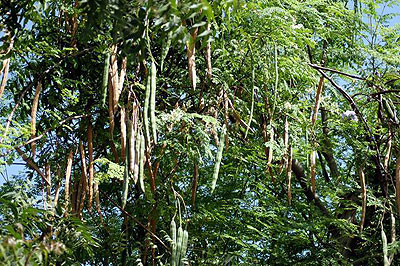Editor, Moringa is sometimes called the “miracle tree” because its leaves are high in protein, vitamins and minerals as are its seedpods. Used for food in East and West Africa, and Asia, it has never found favour in Rwanda except for a short period when it was promoted for its high value oil in the export market.


Editor,
Moringa is sometimes called the "miracle tree” because its leaves are high in protein, vitamins and minerals as are its seedpods. Used for food in East and West Africa, and Asia, it has never found favour in Rwanda except for a short period when it was promoted for its high value oil in the export market.
Globally, there is high demand for the leaf powder in the export markets, served in Europe from West Africa and South Africa and in North America from Central and South America as well as Africa.
What Rwanda and other producers have overlooked in a world where we are facing water shortages and malnutrition is that moringa is a deep rooted plant that thrives in dry environments drawing water and nutrients when other plants die.
Additionally, if it is cut down, many smaller plants grow from the stump. This makes it an ideal plant when grown as forage and not as a tree. It provides a self-sustaining shelterbelt, protecting from erosion due to wind and rain and preventing field topsoil from nutrient loss.
Its leaves not only serve as nutrient rich food for humans, but also its high growth provides, on little space, feed for dairy cows during all seasons, even periods that are dry, increasing both the quality and quantity of milk produced. And, it can be fed to all animals, including pigs and chickens.
Moringa is more nutritious than "dodo” (amaranth) and other leafy greens. Grown as forage, it does not need replanting while providing all the benefits to humans and animals.
The environmental benefits of soil protection and providing food/feed during drought periods as well as capture of carbon dioxide have value immediately and for periods that are and will be affected by climate change.
Near term benefits to the economy are measurable and substantial. For example, dairy cows will produce more milk that is higher in nutritional value year around, including the dry season. This comes at a significant savings in the purchase of imported feed supplements. For farmers, it’s more cash in their pockets. For the country, it can be a measurable increase in GDP due to reduced imports and value added to farm sales and exports.
Solar dried moringa has high value when the crop is produced as a saleable commodity to be used as a feed supplement or food supplement when incorporated into commercial products as is being done outside of Rwanda. It has potential to jumpstart a food industry rather than the traditional raw material export of agricultural products. As fresh or powder, it can be incorporated into cooking. The health benefits are widely known.
The key is to see moringa, not as a tree, but as close-spaced forage that will survive now and in the future when climate change becomes a greater factor in food/feed production. Agriculture produces the raw starting materials for value added products.
Moringa, grown as forage, creates value added products by being fed to dairy cows, pigs, and chickens. As farmers know well, bananas are worth more in the bottle and yellow containers than in the bunch. It is so with moringa.
Dr. Tom Abeles, Rwanda


